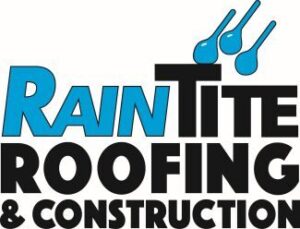Choosing the right roofing material for a commercial building is crucial for its longevity and performance. A strong, durable roof protects the building from weather elements, ensures energy efficiency, and provides safety for those inside. With various roofing options available, understanding the differences between them can help you make an informed decision.
We’ll explore some of the most common commercial roofing materials. By getting to know these materials better, you can choose the best option to suit your building’s needs. Whether you’re constructing a new building or replacing an old roof, understanding these materials can help ensure a successful project. Let’s dive in and discover the best roofing options for your commercial property.
Built-Up Roofing (BUR)
Built-Up Roofing, commonly known as BUR, is one of the oldest and most reliable commercial roofing systems. It consists of multiple layers of bitumen (asphalt) and reinforcing fabrics, which create a durable and waterproof surface. These layers are applied in an alternating pattern and are typically finished with a layer of gravel or a mineral-coated cap sheet.
One of the main benefits of BUR is its proven durability. The multiple layers provide excellent protection against water, UV rays, and physical damage. BUR’s heavy-duty construction also makes it resistant to foot traffic, which is essential for roofs that will be regularly accessed for maintenance.
BUR systems are also known for their excellent insulation properties. The multiple layers help keep the building cooler in the summer and warmer in the winter, which can lead to reduced energy costs. However, BUR installation can be labor-intensive and requires professional expertise. Despite the higher initial cost, its long-term durability and performance often make it a cost-effective option.
Modified Bitumen Roofing
Modified Bitumen Roofing is an evolution of BUR, combining the traditional bitumen with modern polymers to enhance its performance. This results in a flexible, durable roof that can withstand a range of temperatures and weather conditions. Modified bitumen is usually applied in rolls that are easily adhered to the roof using heat, cold adhesives, or self-adhesive methods.
One of the key advantages of modified bitumen roofing is its flexibility. This quality makes it an excellent choice for buildings that experience significant temperature changes, as the material can expand and contract without cracking. It also performs well in extreme weather conditions, offering good resistance to wind, hail, and heavy rains.
Modified bitumen roofs are relatively easy to install and repair. They come in a variety of thicknesses and surface finishes, allowing for customization based on the specific needs of the building. Another benefit is its longevity; a well-maintained modified bitumen roof can last 20 years or more. This type of roofing also offers multiple layering options, similar to BUR, which provides added protection and insulation for the building.
Ethylene Propylene Diene Monomer (EPDM) Roofing
Ethylene Propylene Diene Monomer, or EPDM, is a popular choice for flat or low-slope commercial roofs. This synthetic rubber material is highly durable and offers excellent resistance to weather, uv rays, and ozone. EPDM is available in large sheets, which minimizes seams and reduces the potential for leaks.
One of the biggest advantages of EPDM roofing is its longevity. EPDM roofs can last up to 50 years with proper maintenance. This roofing material is also very flexible, making it less prone to cracking and tearing, even in extreme temperatures. EPDM is resistant to hail, wind, and fire, which adds to its appeal as a reliable roofing option.
EPDM roofs are relatively easy to install, repair, and maintain. The material can be fully adhered, mechanically attached, or ballasted, depending on the specific needs of the building. Its black color helps to absorb heat, making it ideal for colder climates. However, for hotter climates, a white EPDM option is available to reflect sunlight and reduce cooling costs.
Thermoplastic Polyolefin (TPO) Roofing
Thermoplastic Polyolefin, or TPO, is a single-ply roofing membrane that has gained popularity for its energy efficiency and durability. TPO roofing is made from a blend of polypropylene and ethylene-propylene rubber, offering heat resistance and flexibility. TPO membranes are typically white, which helps to reflect sunlight and reduce cooling costs.
One of the key benefits of TPO roofing is its energy efficiency. The reflective surface helps to keep buildings cooler by reflecting UV rays, which can lead to lower energy bills. TPO is also resistant to mold, dirt, and punctures, making it a low-maintenance option.
TPO roofing is relatively easy to install. It can be mechanically attached, fully adhered, or ballasted, depending on the building’s requirements. The seams are heat-welded to create a strong, watertight bond, reducing the potential for leaks. TPO is also environmentally friendly, as it is 100% recyclable at the end of its lifespan.
Conclusion
Choosing the right commercial roofing material is essential for the long-term health and efficiency of your building. Understanding the different options available can help you make an informed decision that fits your specific needs. From the traditional durability of Built-Up Roofing (BUR) and Modified Bitumen to the modern benefits of EPDM and TPO, each material offers unique advantages.
When deciding on a roofing material, consider factors like climate, building structure, and budget to find the best fit. Proper installation and maintenance are also crucial to ensuring the longevity and performance of your roof. By staying informed, you can select a roofing option that provides safety, energy efficiency, and durability for many years to come.
If you’re ready to explore our commercial roofing services in Rapid City, our team at RainTite Roofing & Construction is here to help. Contact us today to schedule a consultation and find the best roofing solution for your commercial property.

